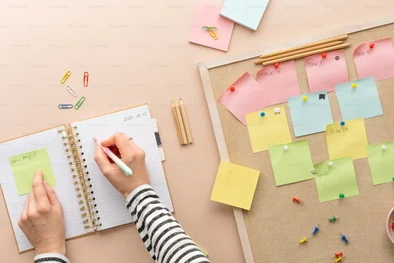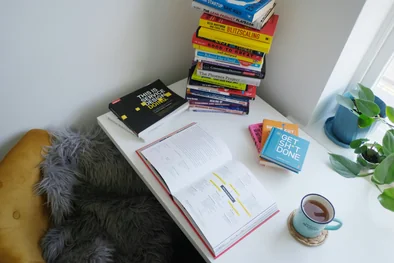Mastering Note-Taking: The 6 Most Effective Systems
Introduction
Transitioning to college can feel like stepping into a more challenging level of a video game. In high school, the tests and assignments were manageable, but college demands more advanced skills and strategies. One crucial skill that can significantly enhance your academic performance is effective note-taking. If you've ever found yourself struggling to decipher your notes before an exam, you're not alone. This guide is designed to elevate your note-taking game, offering proven techniques that will transform your approach and ultimately improve your learning experience.
Preparing for Class: Setting the Stage for Success
Understand the Importance of Preparation
Before you step into the classroom, it's vital to prepare adequately. Engaging with the assigned readings or familiarizing yourself with the lecture topic can set the groundwork for understanding. Research indicates that students who prepare for class tend to grasp the material more effectively. For instance, a study published in the American Journal of Pharmaceutical Education found that law students who reviewed case material prior to class demonstrated significantly better comprehension than their peers who did not.
Essential Materials for Effective Note-Taking
Make sure to equip yourself with all necessary supplies, including pens, pencils, highlighters, sticky notes, and, if needed, your laptop. It's also advisable to stay hydrated—opt for water instead of caffeinated beverages, as excessive caffeine can affect your focus and overall cognitive function. Bring along healthy snacks that provide sustained energy, like nuts or fruit, to avoid distractions caused by hunger.
Cultivating the Right Mindset
Your mental attitude plays a critical role in your learning process. Approaching your classes with a positive mindset can greatly enhance your engagement. Reflect on your previous experiences with challenging subjects; overcoming a tough course can boost your confidence and motivation.
Quick Tip: Pay attention to recurring themes or facts during lectures. Highlighting these can signal their importance for later reviews.
The 6 Most Effective Note-Taking Systems
Now that you’re primed to take notes, let’s explore six popular note-taking methods. Each system has its strengths, so feel free to experiment until you find the one that fits your learning style best.
1. Structured: The Outline Method
Ideal for learners who appreciate simplicity, the Outline Method involves organizing your notes into main topics and sub-points. Start with key themes from the lecture and flesh them out with relevant details. This method is straightforward and allows you to follow along easily, though it may require additional effort during review sessions.
Review Tip: Summarize each main point in your own words to reinforce understanding.
2. For Effective Review: The Cornell Method
The Cornell Method divides your note page into three sections: Notes, Cues, and Summary. The main notes are taken during the lecture, the cues section is for key points or questions, and the summary is a concise recap of the lecture. This structure not only aids in organization but also facilitates efficient review.
3. In-Depth: The Mind Map
Mind Mapping is an excellent tool for subjects with interrelated concepts, such as history or science. Start with a central idea and branch out to subtopics, creating a visual representation of the material. This method encourages a deeper understanding of how different concepts connect.
4. Holistic: Flow Notes
Flow Notes encourage active engagement rather than passive transcription. This style allows for doodles, diagrams, and freeform notes, fostering a dynamic learning environment. While this method may result in chaotic notes, it can be effective for those who prefer a more creative approach.
Caution: This method can pose challenges during review. Consider pairing it with another structured method for better retention.
5. Simplified: Writing on Slides
If your professor provides lecture slides, this method can be a practical choice. By printing out the slides, you can annotate directly on them. This creates a structured layout that mirrors the lecture, making it easier to recall information later.
6. Visual: Bullet Journaling
For the visually inclined, Bullet Journaling combines aesthetics with organization. This method allows you to create a personalized, artistic representation of your notes. While it may slow down your note-taking speed, it can enhance retention and make studying more enjoyable.
Should You Use a Computer for Note-Taking?
The debate over digital versus traditional note-taking persists. Research shows that students using laptops often transcribe lectures verbatim, leading to shallow processing of information. Conversely, handwritten notes engage the brain more deeply, enhancing comprehension and retention.
Finding Balance with Technology
If you prefer digital tools, ensure you stay disciplined to avoid distractions. Alternatively, consider innovative solutions like Rocketbooks, which allow you to take handwritten notes that can be digitized and reused, marrying the benefits of both methods.
Maximizing the Value of Your Notes
Once the lecture concludes, your work isn’t finished. Here are three strategies to extract maximum value from your notes:
- Review Promptly: Revisit your notes within 24 hours to reinforce retention.
- Daily Review: Regularly review a portion of your notes to ensure long-term recall instead of cramming.
- Look for Patterns: As you engage with readings or assignments, cross-reference with your notes to identify recurring themes that may appear in assessments.
Ultimately, mastering note-taking is a skill that requires practice and adaptation. Embrace the process, stay engaged in class, and commit to regular review. With dedication, you can enhance your learning experience and achieve your academic goals.



